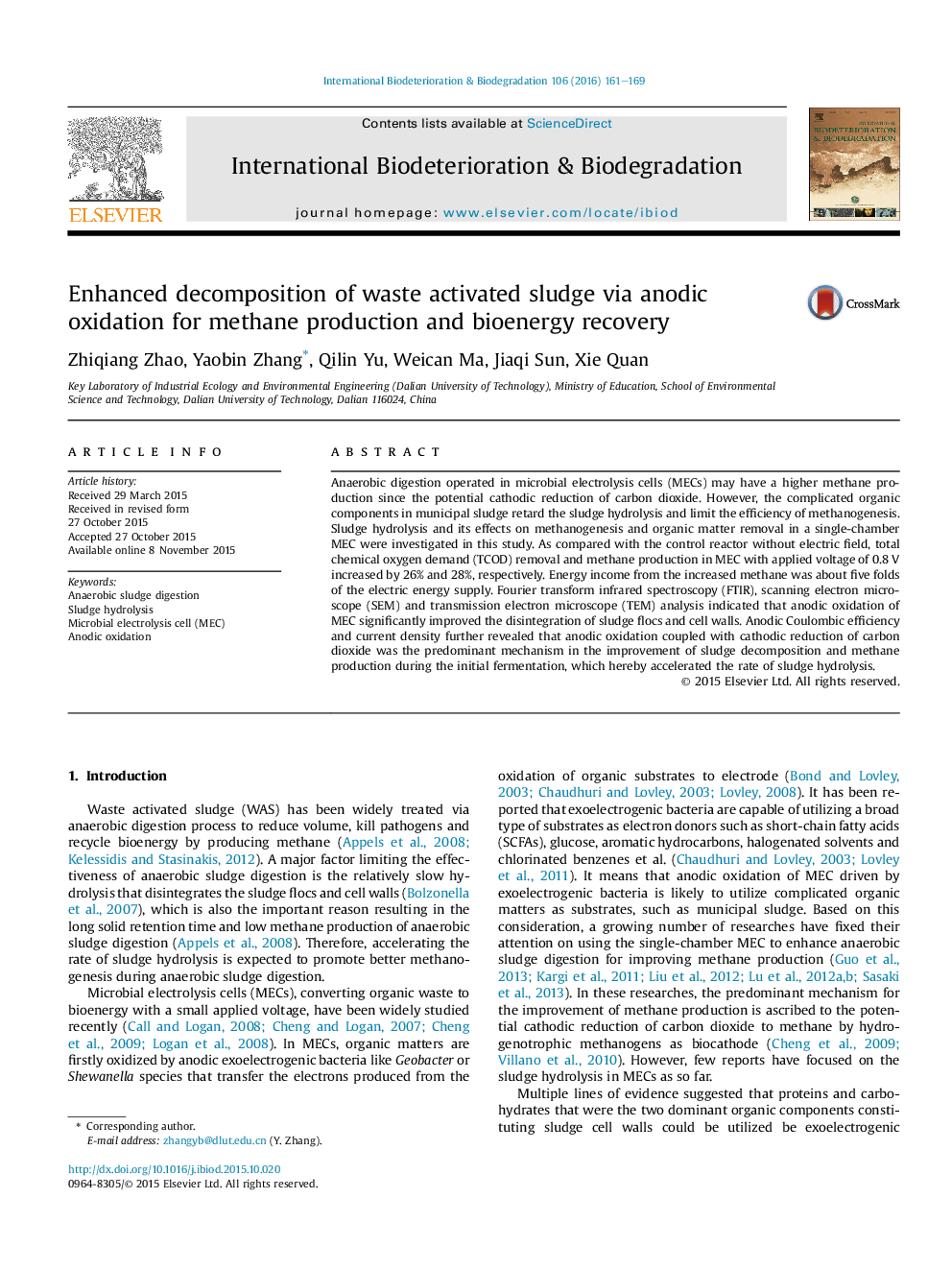| Article ID | Journal | Published Year | Pages | File Type |
|---|---|---|---|---|
| 4364299 | International Biodeterioration & Biodegradation | 2016 | 9 Pages |
•Sludge hydrolysis was significantly enhanced via anodic oxidation of MEC.•Organic matters decomposition rate was also improved in the MEC reactor.•An extra 28% CH4 yield was obtained after 24 days experiments.•Electric energy supply was 1/5 of energy income from the increased methane.
Anaerobic digestion operated in microbial electrolysis cells (MECs) may have a higher methane production since the potential cathodic reduction of carbon dioxide. However, the complicated organic components in municipal sludge retard the sludge hydrolysis and limit the efficiency of methanogenesis. Sludge hydrolysis and its effects on methanogenesis and organic matter removal in a single-chamber MEC were investigated in this study. As compared with the control reactor without electric field, total chemical oxygen demand (TCOD) removal and methane production in MEC with applied voltage of 0.8 V increased by 26% and 28%, respectively. Energy income from the increased methane was about five folds of the electric energy supply. Fourier transform infrared spectroscopy (FTIR), scanning electron microscope (SEM) and transmission electron microscope (TEM) analysis indicated that anodic oxidation of MEC significantly improved the disintegration of sludge flocs and cell walls. Anodic Coulombic efficiency and current density further revealed that anodic oxidation coupled with cathodic reduction of carbon dioxide was the predominant mechanism in the improvement of sludge decomposition and methane production during the initial fermentation, which hereby accelerated the rate of sludge hydrolysis.
Graphical abstractFigure optionsDownload full-size imageDownload as PowerPoint slide
